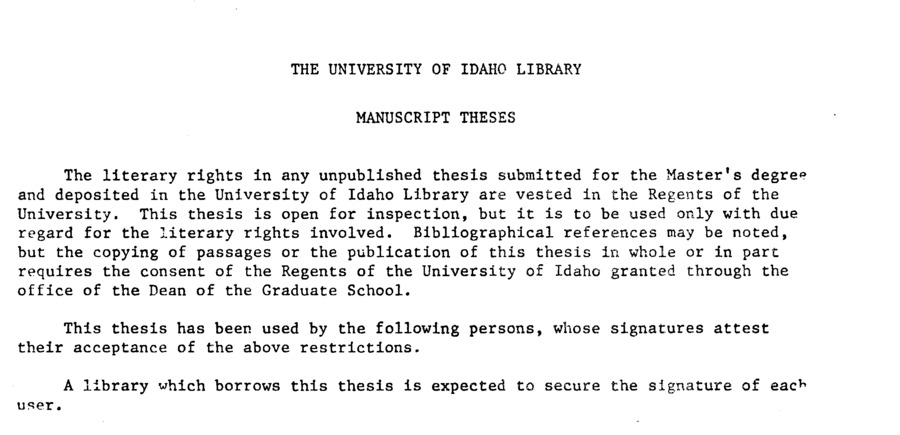PDF
Hydrogeology and potential reclamation procedures for an uncontrolled mine waste deposition site, Kellogg, Idaho Item Info
- Title:
- Hydrogeology and potential reclamation procedures for an uncontrolled mine waste deposition site, Kellogg, Idaho
- Authors:
- Norton, Marc A.
- Contributors:
- Idaho Water Resources Research Institute; IWRRI
- Date:
- 1980-11
- Description:
- The reclamation of the South Fork of the Coeur d'Alene River basin in northern Idaho from the effects of past mining practices is imperative if the water quality of the river is to meet the requirement of "fishable and swimmable" set by Public Law 92-50, the Federal Water Pollution Control Act Amendments of 1972. Current mining practices are monitored and regulated by the Federal Environmental Protection Agency to ensure that present mining activities are within the regulations. Mine wastes or tailings were deposited on the flood plain or in the channel of the South Fork of the Coeur d'Alene River. These mine wastes were carried downstream, mixing with the native alluvial material and forming large deposits. In the early 19oo's, a series of dams were constructed across the South Fork of the Coeur d'Alene River in an attempt to control the downstream movement of the mine waste. As the South Fork entered the Smelterville Flats study area, located one mile west of Kellogg, Idaho, the coarser sediments were deposited first. The finer materials were deposited in the backwaters of a dam located at the western end of the Flats. These tailings have high concentrations of zinc, lead, iron, and many other metals. Water movement through these tailings leaches the heavy metals into solution where they are able to enter the water resource system. Piezometers were installed to monitor the water quality and for water levels measurements. Soil pits were constructed to determine the depth of mine waste and its physical and chemical properties. The effect on the water quality of the South Fork of the Coeur d'Alene River by groundwater in the Smelterville Flats study area is minimal. Based on the data collected, potential reclamation procedures were developed to minimize the long-term effect of the abandoned mine waste on the water resource system. Potential reclamation procedures include removal of the mine waste, fluctuation of the groundwater level, or, do nothing at all.
- Subjects:
- mine wastes acid mine drainage water reclamation
- Location:
- Kellogg, Idaho
- Idaho County:
- Shoshone County
- Latitude:
- 47.54
- Longitude:
- -116.12
- Collection:
- Coeur d'Alene Basin
- Source:
- University of Idaho
- Publisher:
- University of Idaho
- Contributing Institution:
- University of Idaho
- Type:
- Text
- Format:
- application/pdf
- Cataloger:
- wbv
- Date Digitized:
- 2012
- Language:
- eng
Source
- Preferred Citation:
- "Hydrogeology and potential reclamation procedures for an uncontrolled mine waste deposition site, Kellogg, Idaho", Idaho Waters Digital Library, University of Idaho Library Digital Collections, https://www.lib.uidaho.edu/digital/iwdl/items/iwdl-cda_norton_1980.html
Rights
- Rights:
- In copyright, educational use permitted. Educational use includes non-commercial reproduction of text and images in materials for teaching and research purposes. For other contexts beyond fair use, including digital reproduction, please contact the University of Idaho Library Special Collections and Archives Department at libspec@uidaho.edu. The University of Idaho Library is not liable for any violations of the law by users.
- Standardized Rights:
- http://rightsstatements.org/vocab/InC-EDU/1.0/

